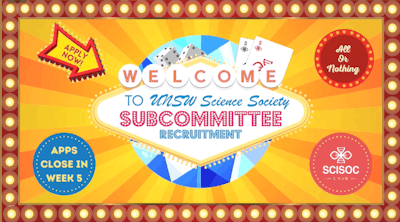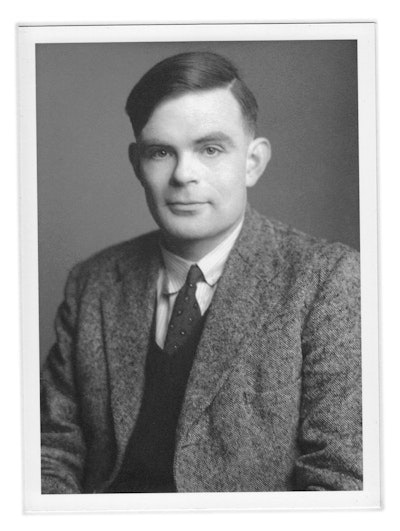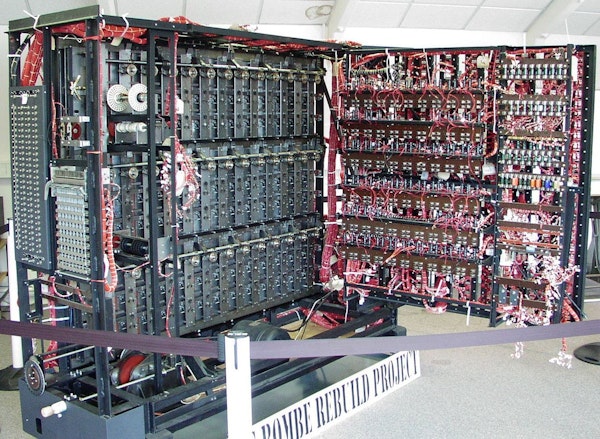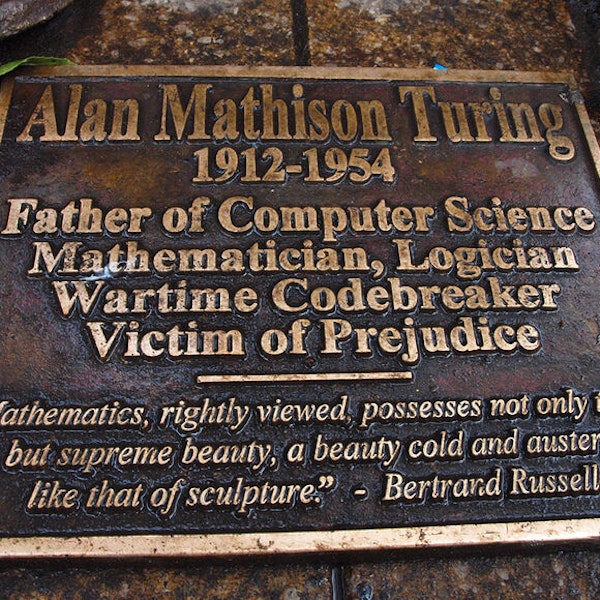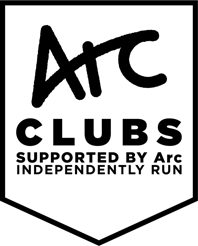Welcome back to another edition of SCISOC's fortnightly newsletter PRISM! In this edition, we've decided to feature Alan Turing in our Scientist Spotlight, as well as the vital contributions he's made that have shaped the world as we know it. In this edition's Fun Corner, we also discuss the Royal Easter Show and its downfall from its previous glory due to the over-commercialisation it has faced in the last couple decades. Read on to find out more! |
|
|
SCISOC Subcommittee Drive Thank you to all those who've applied for our SCISOC 2021 Subcommittee Recruitment Drive! We had many amazing applicants this year, each more skilled and talented than the last. It made picking this year's team very difficult, which is why we want to issue a congratulations to the new subcommittee team this year! We also wanted to thank everybody who applied this year. We wish everybody the best, and to be on the lookout for future opportunities from SCISOC! Stay updated with us on our Facebook page here. |
| |
|
| Computers are vital machines which are used avidly in day to day life, whether that be in the form of a laptop, a phone or even an Apple watch. All these items have become common place in society and the majority of people could probably not imagine a world without them. But these technologies didn’t always exist, up until Alan Turing came in the picture. Every intentional invention is motivated by one of two things; curiosity, or necessity. In the case of computers, it was a bit of both. Alan Turing had always been interested in mathematics and science, but he also had a keen interest in code breaking. And it was this interest in code breaking which would eventually lead to him build the groundwork upon which modern computers rely upon. |
|
|
This all began from a very early age for Alan Turing. As a child, he was exceptionally gifted in mathematics and sciences, and also had some interest in code breaking. This interest would eventually lead him to work at the British Government Code and Cipher School during World War II. During World War II, the Germans were at a huge advantage due to their utilization of the Enigma machine. The Enigma machine was a cipher which would encrypt messages and send them securely to the German troops. This code was thought to be nearly impossible to break, and coupled with the fact that the encryption would regularly change, this gave the Germans a huge advantage. It was during this time that Alan would use his knowledge of code breaking and mathematics to tackle and eventually break the Enigma code. |
|
|
Prior to Turing, the majority of the efforts directed towards breaking the Enigma cipher were people trying to crack the code by hand. The difference in Turing’s attempt was that he used technology and co-invented a machine called the Bombe which would aid in the breaking of the Enigma cipher. Turing’s work significantly aided the Allied Forces efforts and ultimately shortened the war by two years, saving millions of lives in the process. |
|
|
Alan Turing had already conceptualized a machine called the “Turing Machine” which could solve any problem, similar to modern day computers. But his experience from World War II and his creation of the Bombe allowed him to further develop these ideas which would eventually lead to the development of modern-day computers. Although Turing greatly contributed to the victory of World War II and in the development of the fundamental ideas behind modern-day computers, he also faced great prejudice during his life due to his sexuality. Furthermore, due to the classification of his work during the World War II, he received no public credit in his lifetime, and was instead prosecuted for being homosexual, which was a crime at the time. However, since then his work has become declassified, and the world has come to know of his great contributions. He was posthumously awarded many titles and awards, and rightly so. After all, without him, chances are that the war would’ve continued for many more years and resulted in many more casualties. Turing’s efforts and contributions cannot be overstated and without him the world would be very different today. |
|
|
The Sydney Royal Easter Show is Australia’s largest ticketed event aimed to create an opportunity for show-goers to experience country life in the city. On paper, it sounds like a successful scheme to educate people about Australian agriculture, however, in reality, it is over-commercialised, over-priced, and over-crowded. |
|
|
Research by the Easter Show found that the average spend per person was about $106 at the 2019 Easter Show. Now, keep in mind that this means the average person spent $65 on top of the entry ticket. The fact that there are multiple guides on how to cut your costs at the show says a lot about the outlandish prices of the show – starting with the Carnival Ride coupons. |
| |
|
The organisers are well aware that the rides have become a heavy attraction of the show, and therefore exploit customers’ money with their unreasonable pricing – averaging at around $1 per coupon. If I wanted to go and enjoy the rides, I would happily go to Luna Park instead of paying almost $10 for every ride, and on top of that, waiting for hours in an over-crowded showground, just for a 2-minute experience. And don’t even get me started on the pricing of the food and drinks. With just a bottle of water being priced at $5 (mind you, that’s $1 per 100mL), it’s needless to say that you can easily burn money on food if you’re unprepared. Not only are the rides’ queues long, as the lines for food trucks are so ridiculous that you end up buying more food than needed because even the rate of your stomach emptying becomes faster than the rate of progression of the food queues. |
|
|
| Showbags, which were originally supposed to serve as a takeaway bag of free produce, are probably the biggest rip-off of all. The epitome of inflation, there is now an entire hall for the sole purpose of selling overpriced show bags which have nothing to do with Australian agriculture whatsoever. |
|
|
You can spend anywhere from $4 to $30 for crappy branded merchandise that you don’t really need – and even if you did, it was probably just one or two items in the bag that enticed you, and the rest: rubbish. So, whatever happened to the original plot of the show? Sydney’s Royal Easter Show started as an Agricultural Society in 1822, intending to increase livestock within the colony, display goods from various growers and manufacturers, and share farming practices. However, the traditional elements of the show have now been overshadowed by the business-minded aspects, and people rarely go to the Easter Show for the fresh food hall, agriculture displays, or animal competitions, but rather for entertainment only. With the majority customer segment being parents with pre-school children, the show’s organisers have taken advantage of children’s appeal towards fun, which is really just underlying over-commercialism. |
|
|
UNSW Science Society is proud to announce our continued partnership with GradReady through 2020. GradReady provides GAMSAT Preparation courses for anyone looking to pursue Medicine after they graduate.
This process starts earlier than you think, so if you’re studying medical science or just have that passion, check out what they have to offer! |
|
|
| This student Club publication is proudly supported by Arc. For more information about Arc Clubs, visit www.arc.unsw.edu.au. |
|
|
| |



